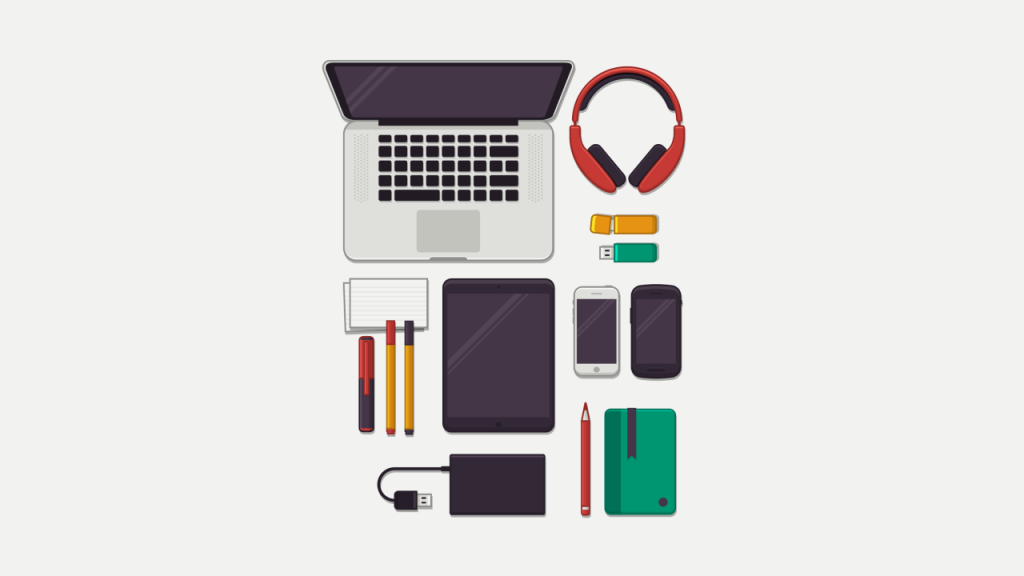In this article, we go through the basics of tech survival kits, what goes in them, and what you need to know to pack your own.
It’s a fact that the world is in an unprecedented time of crisis.
Whether it’s a natural disaster like a hurricane, an earthquake, or an economic or political crisis that threatens to upend society as we know it, there are plenty of reasons to be concerned about the future. And plenty of reasons to be prepared for unknown or unforeseen events.
And yet, you can also do things to feel more secure—and one of those things is having a tech survival kit on hand.
So take the time to tear yourself away from your editing tasks or our latest How-to guide and join us as we cover the basics of tech survival kits and what you need to know to pack your own.
What Is A Tech Survival Kit?

When you think about how to prepare for a crisis, your mind probably goes to the big stuff: food, water, shelter, and so on.
But what about the other things? The things that make life bearable in an emergency, such as having essential tools?
And what about staying connected to the rest of the country or world amid upheaval?
A tech survival kit contains the small and simple things that can make a big difference when you are in a crisis. Think travel adaptors, backup phones, portable Wi-Fi hotspot devices, and digital copies of all your important documents.
These handy ‘go bags’ contain all the essential tech you need to stay connected, prove your identity if required, and recharge your devices.
Tech Survival Kits Aren’t Just For Preppers Or Emergencies
Despite the “survival” in its name, a tech survival kit isn’t just for when everything goes wrong. It’s also for when things go right or for planned excursions.
For example, if you’re planning a vacation or an extended trip away from home, this kind of go bag full of essential tech helps ensure that the technology you rely on stays charged and is ready for use at all times.
What Goes In A Tech Survival Kit?
What goes in your tech survival kit will ultimately depend on your needs, so no two kits will be identical. That said, there are a few basics that most if not all, kits should have. For instance, charging cables are an absolute necessity.
Let’s take a look at those essentials now. You may want to save and print out the checklist below to help you create your kit:
Checklist of Tech Survival Kit Basics
- USB flash drive containing digital copies of your most important documents (passports, birth certificates, driver’s licenses, and so on.
- USB flash drive containing important medical information, such as your blood type, known conditions, medications you’re currently taking, and medical history.
- Portable power banks so you can charge your devices conveniently.
- Cables to charge your phone/s along with data transfer and USB cables for charging other devices.
- Universal adaptors so that you can access power in any country. Try and choose universal adaptors that can also have USB-A and USB-C ports.
- A secondary smartphone or a satellite phone.
- Pre-paid SIM card that allows you to connect to international networks.
- Portable Wi-Fi hotspot device so you can connect other devices to the internet.
- Standard batteries, because you never know when you’ll need them.
- Waterproof and fireproof cases for your USB devices.
- Hand-powered radio and torch combo device in case there is no option to use electricity, or your devices are flat.
- GPS location beacon to alert others to your whereabouts.
- Screw drivers to fix other items in your survival kit.
- A headtorch or another small and powerful torch with excellent battery life.
- Waterproof watch that doesn’t need charging. Look for analog watches with a compass and a bezel if you need to orient yourself.
Tips For Packing Your Survival Kit
The items above are a guide; you might find that you want or need more than what’s listed here. But regardless of what your kit contains, here are a few tips for putting it all together:
- Gather Your Documents: Start by making digital copies of your important documents if you don’t have them already. Choose a good-quality USB flash drive to store these on, and use another for your medical information.
- Get Your Items First, Then Choose A Case: Because you won’t know exactly how big your case needs to be to store everything, it’s best to gather all your kit items and assess your size requirements.
- Choose Quality Cases: Look for water and fireproof cases that are also lightweight. The last thing you want in an emergency is hauling a heavy grab bag around!
- Don’t Be Cheap: Choose the best quality items for your tech survival kit.
We hope this brief guide to tech survival kits was helpful. We’ll let you get back to that how-to guide now, but don’t forget to gather your tech essentials into a handy go bag soon!


